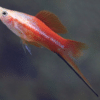To provide the best experiences, we use technologies like cookies to store and/or access device information. Consenting to these technologies will allow us to process data such as browsing behaviour or unique IDs on this site. Not consenting or withdrawing consent, may adversely affect certain features and functions.
The technical storage or access is strictly necessary for the legitimate purpose of enabling the use of a specific service explicitly requested by the subscriber or user, or for the sole purpose of carrying out the transmission of a communication over an electronic communications network.
The technical storage or access is necessary for the legitimate purpose of storing preferences that are not requested by the subscriber or user.
The technical storage or access that is used exclusively for statistical purposes.
The technical storage or access that is used exclusively for anonymous statistical purposes. Without a subpoena, voluntary compliance on the part of your Internet Service Provider, or additional records from a third party, information stored or retrieved for this purpose alone cannot usually be used to identify you.
The technical storage or access is required to create user profiles to send advertising, or to track the user on a website or across several websites for similar marketing purposes.















Emily Carter (verified owner) –
I recently purchased 10 Pink Swordtails, and I couldn’t be happier with my decision! After just two weeks in my 50-gallon tank, they have already added a splash of vibrant color and liveliness that I was looking for. These livebearers are not only beautiful with their shimmering pink hues, but they are also incredibly friendly and interactive. It’s heartwarming to watch them swim around and engage with one another, which really enhances the overall atmosphere of my aquarium.
Compared to other livebearers I’ve had, these Swordtails are more active and seem to thrive in a community setting. I’ve noticed they get along well with my guppies and tetras without any aggression. I appreciate that they were shipped quickly and arrived in great health—each fish looked strong and lively. I did have a minor concern about the initial acclimation process; they were a bit shy at first but quickly warmed up once settled in.
I highly recommend these Pink Swordtails for both beginner and experienced aquarists. They’re a perfect addition for anyone looking to liven up their tank with colorful, engaging fish. Just make sure to provide plenty of plants and hiding spots for their comfort! Overall, a fantastic purchase for any fish lover!
Emily Collins (verified owner) –
I recently purchased 10 Pink Swordtails, and I couldn’t be happier! As a passionate aquarist, I’m always on the lookout for freshwater fish that not only look stunning but also thrive in a community tank. These swordtail fish have brought so much joy to my aquarium! After a week of acclimation, I noticed their vibrant colors really pop, especially against the lush green plants I have. They swim gracefully together, making my tank come alive.
What I love most is how easy they are to care for! They adapt well to different water conditions, which is a huge plus for someone like me who sometimes struggles with maintaining ideal parameters. I also appreciate that they are livebearers, so I might get the chance to raise some fry! Compared to other tropical fish I’ve kept, the swordtails are much more outgoing and interactive, which is perfect for my community setup.
If you’re a beginner or just looking to add some lively colors to your tank, I highly recommend these pink beauties! Just remember to provide them with plenty of space to swim and hide. I will definitely be buying more in the future!